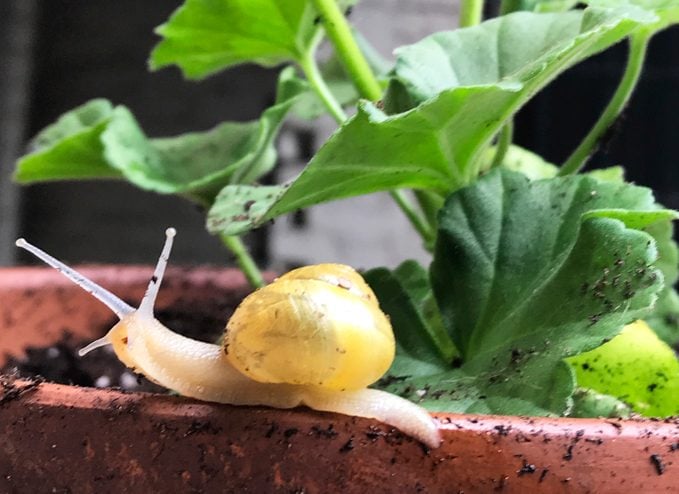How to Get Rid of Slugs and Snails in the Garden
Updated: Aug. 18, 2021
Stop slugs and snails from chewing on your garden. Learn how to get rid of slugs and snails for good. Plus, get tips to prevent other pests.
Our editors and experts handpick every product we feature. We may earn a commission from your purchases.

If you have plants, you’re probably wondering how to get rid of slugs and snails in the garden. Even if you may not see them often, they make their presence known by eating up to six times their weight in plant material per night. These mollusks can leave plants looking like Swiss cheese. Although they’re most active in the evening, it is possible to combat the pests any time of day with these simple strategies.
Here’s how to get rid of the 10 worst garden insects.
1. Beer Traps
Use beer to get rid of slugs and snails! Bury tuna fish cans or plastic yogurt cups in the dirt up to their rims, then crack a beer and fill the containers (the older and more stale the beer, the better). Slugs and snails are attracted to the yeasty aroma, then fall in and drown. Replace the beer as needed.
Got holes in your leafy greens? You have cabbage worms.
2. Course Moats
Add an inch of coarse sand, diatomaceous earth (look for it online or at garden centers), or eggshells in a 3-inch-wide band around plants. In dry weather, the slimy creatures won’t cross over the sharp material to get to their buffet.
3. Ash Barriers
Slugs and snails avoid wood ashes because of their alkalinity, so in the garden you can distribute wood ashes from the fireplace (but not charcoal, which may contain chemicals). Over time, ashes can increase the pH of soil, so use sparingly.
Check out 11 pictures that will change how you see bugs.
4. Copper Bands
It’s not cost-effective for a large number of plants, but place copper bands around prized plants that are vulnerable to attack. When slugs slither across the copper bands, the moisture in their slimy trails sets off an electrical shock, keeping the pests from continuing their journeys up the stem.
Learn how to get rid of indoor plant bugs.
5. Environmentally-Safe Baits
Iron-phosphate baits are considered safe for other animals but deadly for slugs and snails. The pests eat the bait, stop feeding and die within a few days. According to the Oregon State University Extension, iron-phosphate baits are just as effective as metaldehyde baits but are not toxic to wildlife or pets. Some brand names include Sluggo or Garden Safe Slug & Snail Bait.
Check out more natural ways to eliminate garden pests.
6. Pick Slugs and Snails Off Yourself
Use a flashlight to hunt for snails and slugs in the evening, about two hours after sunset. If you’re searching during the day, look in shady, damp areas and beneath leaves and garden debris for the pests. When you find a slug or snail, shake some salt on it-—the deadly ingredient dehydrates the pest. Or pick it up and place it in a jar filled with soapy water.
Meet 4 beneficial insects you want to see in your garden.
7. Attract and Get Rid of Slugs and Snails
Set a trap by placing boards in shady areas of the garden where slugs and snails hide in the daytime. Lift up the boards and scrape off the pests. You can do the same thing with inverted grapefruit rinds in problem areas. Turn them over in the morning, scrape out and destroy, and enjoy your pesticide-free garden with fewer slugs.
Discover 7 natural ways to keep bees and wasps away from hummingbird feeders.
Other Pest Solutions
Use these simple and easy techniques to keep your yard safe from bad bugs and pesticides.
- Dislodge aphids, mites and spittlebugs with a blast from the hose.
- Shake the base of a plant to remove adult Japanese beetles and drop them into a soapy jar of water.
- Destroy plants that have scale. Other than small-scale infestations, it’s usually easiest to just get rid of the plant.
- Encourage lady beetles to visit and eat aphids and spider mites.
- Remove larger pests like squash bugs and tomato hornworms from plants and dispose of them. Tomato hornworms grow to be sphinx moths so some gardeners chose to put up with the damage they cause.
